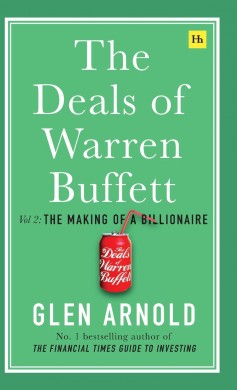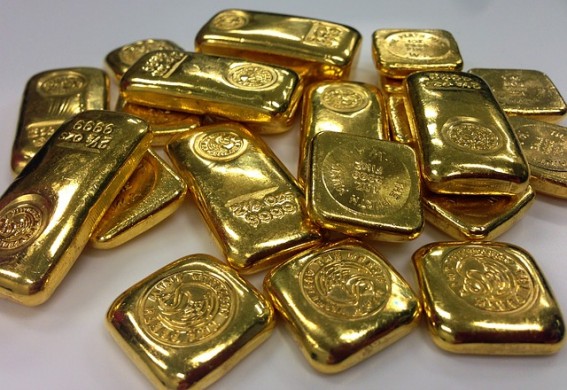This story covers what Buffett himself declared as his “most gruesome error”. Within a few short years the value of $433m paid for the third company bought to build Berkshire Hathaway’s Shoe Group, Dexter, had evaporated completely. It wouldn’t be quite so painfully seared on Buffett’s mind if he had paid cash. Okay, that’s $433m lost, but in the context of a company with a market capitalisation of $10bn (in 1993) it would be bearable.

But he agreed to pay with 25,203 Berkshire Hathaway shares, around 2.14% of the 1.177m shares in public issue. Thus, Berkshire shareholders swapped 2.14% of their company for something that would soon be slaughtered by the blows of competitors.
The shares they sacrificed are today trading over $314,000 each. So effectively, Dexter has cost $8bn.
The shoe adventure wasn’t all bad. The specialist manufacturers H. H. Brown and Lowell continued to be able to charge prices allowing a reasonable profit. Customers of these products, e.g. telegraph pole climbers, soldiers and nurses, needed good quality boots with steel toe caps or indoor comfortable shoes that they could wear all day. They were more than willing to pay a premium price to get the right fit and performance – going cheap would be an obvious false economy.
And so it is that Berkshire Hathaway has enjoyed a flow a profits from shoes and boots selling in niche areas for over three decades. It is just a pity that two-thirds of the money laid down to create what Buffett named “The Shoe Group” turned out to be wasted.
Still, we investors can learn much from errors, especially when made by a then very experienced 63-year old investor.
Summary of the deal
| Deal | The Shoe Group | ||||||||||
| Time | 1991 – Present | ||||||||||
| Price paid | H. H. Brown, July 1991: $161m
Lowell, December 1992: $46m Dexter, November 1993: 2.14% of Berkshire’s shares, worth $433m |
||||||||||
| Quantity | All their shares | ||||||||||
| Sale price | Still held | ||||||||||
| Profit | Not disclosed, but acknowledged to be disappointing | ||||||||||
Berkshire Hathaway in 1991
|
H. H. Brown
Henry H. Brown opened his first shoe factory in 1883, adding to the 23 already in the town of Natick, Massachusetts. Two years later the company was employing 175 people producing 2,000 pairs daily.
Thirty-seven years after that, in 1927, Henry H. Brown sold his company to 29-year-old Ray Heffernan for $10,000. He was to run the firm for 62 years during which time it earned a reputation for producing rugged boots. For example, the Corcoran boot was the original jump boot for paratroopers in WW2, and its combat boots have been used by infantry soldiers in many theatres. It collected other famous brands through takeovers such as the Double-H western boot.
It’s not just the military who are willing to pay up to $300 for a pair of boots (average prices are $120 – $160): builders, farmers and lumberjacks need long-lasting strength, steel toe caps and all-day comfort, as do the police and firemen; miners, postal workers, bikers and search & rescue teams not only value resilience but the water resistance.
Then there is the “built in America” cachet which meshes with the proclivity of US government organisations at all levels to favour goods perceived to be manufactured domestically. Also, many key customers require short lead times, and sometimes small batches, which means there is an advantage in manufacturing in America rather than in far-away Asia.
These factors allowed H. H. Brown to both grow its market and achieve good margins. By 1991 operating profit was 12% of revenue of over $200m. Pre-tax profits were about $25m, and after-tax profit attributable to shareholders around $15m.
Frank Rooney
Ray Heffernan managed the four factories employing around 1800 employees and a direct sales force of over 100 brilliantly, supplying hundreds of small independent retailers and wholesalers who then sold to workers required to wear safety shoes or boots because of the nature of their work in say heavy manufacturing, construction or steel. Then there were the special relationships he built with the likes of the army, police forces or fire services.
Over a lifetime of endeavour he created the leading domestic producer of …..………………To read more subscribe to my premium newsletter Deep Value Shares – click here http://newsletters.advfn.com/deepvalueshares/subscribe-1………
…..This story continues tomorrow with a look at the deal Buffett struck to buy H. H. Brown – it is part of a number of case studies to be published in the third book in the series of “The Deals of Warren Buffett” next year.


 Hot Features
Hot Features














This is some unwanted fucking information, I WILL be getting this page taken down. I think this is some bullshit and it seems dumb as fuck.